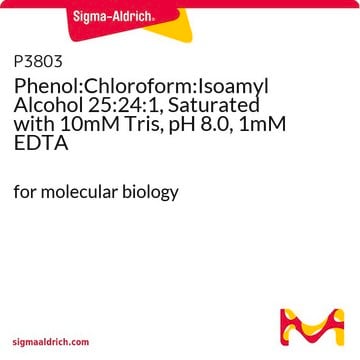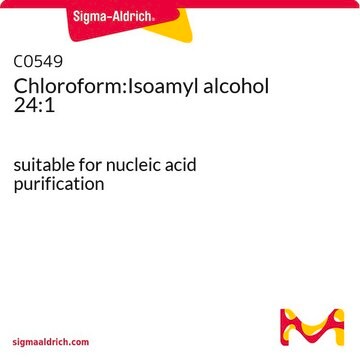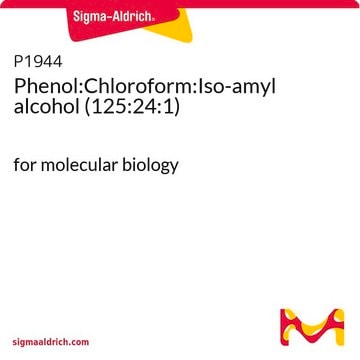P4682
Phenol solution
BioReagent, Saturated with 0.01 M citrate buffer, pH 4.3 ± 0.2, for molecular biology
Synonym(s):
nucleic acid extraction
About This Item
Recommended Products
grade
for molecular biology
product line
BioReagent
form
liquid
technique(s)
RNA purification: suitable
pH
4.1-4.5 (25 °C)
storage temp.
2-8°C
SMILES string
Oc1ccccc1
InChI
1S/C6H6O/c7-6-4-2-1-3-5-6/h1-5,7H
InChI key
ISWSIDIOOBJBQZ-UHFFFAOYSA-N
Gene Information
human ... GABRA1(2554)
Looking for similar products? Visit Product Comparison Guide
General description
Application
- for the extraction of RNA by standard phenol-chloroform protocols
- in cell wall monosaccharide analysis to treat epidermal strips from the abaxial side of Commelina communisin leaves
- as a component of lysis-denaturation buffer for RNA isolation
Biochem/physiol Actions
related product
Signal Word
Danger
Hazard Statements
Precautionary Statements
Hazard Classifications
Acute Tox. 3 Dermal - Acute Tox. 3 Inhalation - Acute Tox. 3 Oral - Aquatic Chronic 2 - Eye Dam. 1 - Muta. 2 - Skin Corr. 1B - STOT RE 2
Target Organs
Nervous system,Kidney,Liver,Skin
Storage Class Code
6.1A - Combustible acute toxic Cat. 1 and 2 / very toxic hazardous materials
WGK
WGK 2
Flash Point(F)
Not applicable
Flash Point(C)
Not applicable
Certificates of Analysis (COA)
Search for Certificates of Analysis (COA) by entering the products Lot/Batch Number. Lot and Batch Numbers can be found on a product’s label following the words ‘Lot’ or ‘Batch’.
Already Own This Product?
Find documentation for the products that you have recently purchased in the Document Library.
Customers Also Viewed
Our team of scientists has experience in all areas of research including Life Science, Material Science, Chemical Synthesis, Chromatography, Analytical and many others.
Contact Technical Service








